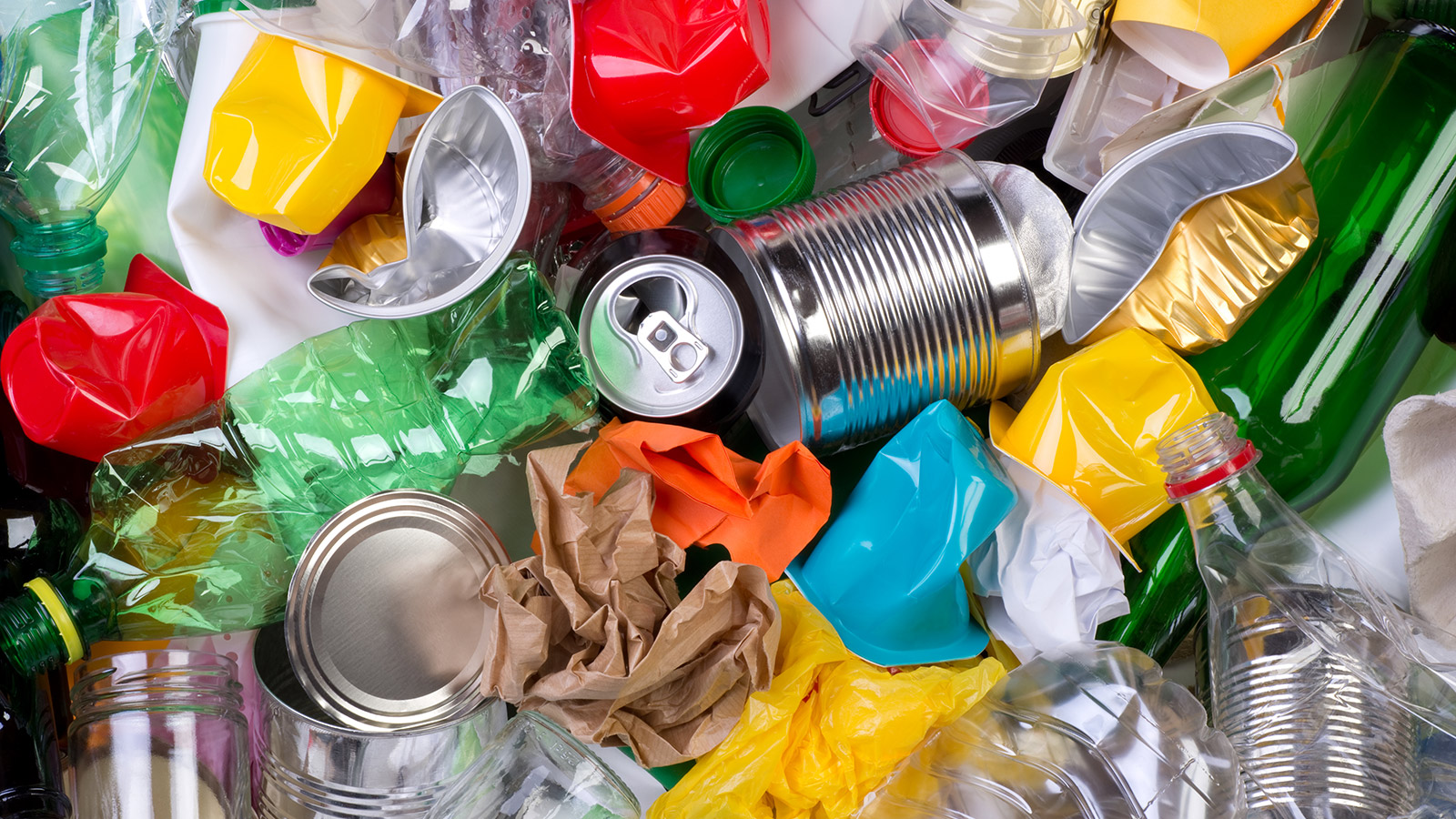Q. If plastic isn’t labeled with a number, should I try recycling it or not? And if something isn’t recyclable but I put it out for pickup anyway, am I screwing up the system?
Liz
Columbia, S.C.
A. Dearest Liz,
What’s that they say about the road to the recycling center being paved with good intentions?
I certainly don’t mean to suggest that your desire to recycle to the max is particularly sinful, Liz. Plenty of people suffer from this kind of recycling confusion, and among the eco-conscious, it’s natural to want to divert every last scrap from the landfill. But tossing non-recyclables – that is, trash – into the bin is bothersome at best and damaging at worst.
A quick refresher on how single-stream recycling programs like yours usually work: You place your clean papers, plastics, and metals in their bin. They make their way to your local recycling center. The first stop is a materials recovery facility, or MRF (say “Murph” to impress at waste-management parties). There, a combination of machines and human employees separate all the different materials, pick out items that don’t belong, and bale the stuff to be sold to manufacturers. Old becomes new, virgin materials are preserved, and everybody’s happy.
So what happens when the load of recyclables comes in contaminated? Contamination, in this industry, refers to both dirty/oily/food-stained containers that are recyclable in your area and trash items that are not. In the best-case scenario, intruders (often things like loose plastic bags, Styrofoam, or clamshell plastics) are flagged early and tossed into the trash at the MRF. If this happens to, say, a paper coffee cup you wishfully placed in your bin, then you’ve just sent it on a roundabout journey to the landfill and reduced the efficiency of your town’s waste management operation. Not the end of the world, true, but unnecessary, don’t you think?
Other times, trash can jam up the sorting machines (a particular problem with loose plastic bags), slowing the whole process. Worse times, it can even damage the equipment, which costs precious money and time to fix (in 2009, Phoenix reported recycling contamination cost the city $722,000!). If the offending items make it through the machines, it’s easy for employees to miss them whizzing by on the conveyor belt, so the bad stuff can get mixed up with the good stuff. Sometimes this isn’t a big deal, and manufacturers can buy the bale anyway; but if the contamination is severe enough, it can spoil the whole lot and send a load of perfectly recyclable items to the landfill.
So you see, Liz, it really is important to get it right when sorting your own recyclables. How to do it? First, know this: The 1-7 numbers printed on most plastics are helpful clues, but they don’t automatically mean that the item is recyclable in your town. In order for recycling to make economic sense, there has to be a local market for the material – without one, your MRF won’t accept that particular plastic. You often see this situation with #6s (polystyrene) and some #7s (the ones marked PLA, which are compostable but not recyclable). And alternately, sometimes you can recycle plastics that don’t have numbers: namely, bottle caps.
OK, great, you may be thinking. Now I’m really going to mess it up. But happily, there is an easy way to solve this pickle. To err with recycling is human, but to check local regulations is divine, Liz. Your municipal recycling outfit can tell you exactly what’s accepted and what’s not. You may want to bookmark Columbia’s list; everyone else, your neighborhood regs should be just a Google search away. If you’re still unsure about a particular item, you can (and should) always call the company and ask.
Knowledge is power, and in this case, it’s a nice, clean, well-sorted load of recyclables, too.
Assortedly,
Umbra




